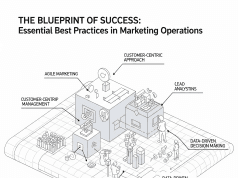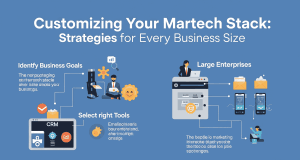In today’s rapidly changing digital landscape, the integration of Marketing Technology (Martech) has become essential for businesses seeking to optimize their marketing efforts. A well-structured Martech stack can enable organizations to streamline processes, enhance customer experiences, and ultimately maximize return on investment (ROI). Here’s how to build a Martech stack that delivers measurable results.
Understanding the Martech Landscape
The Martech landscape is vast, encompassing thousands of tools ranging from customer relationship management (CRM) systems to email marketing platforms, analytics software, and social media management tools. This complexity can lead to confusion and inefficiencies if businesses are not strategic about their selections.
Key Components of an Effective Martech Stack
- CRM Systems: At the core of any Martech stack, a robust CRM system is crucial for managing customer relationships, tracking interactions, and analyzing customer data. Popular options include Salesforce, HubSpot, and Zoho.
- Content Management Systems (CMS): Quality content is fundamental to digital marketing success. A flexible CMS like WordPress or Drupal enables teams to create, manage, and optimize content effectively.
- Email Marketing Tools: Targeted email campaigns can drive substantial ROI. Tools like Mailchimp, SendGrid, and Klaviyo help marketers automate campaigns and analyze their success.
- Analytics and Attribution Tools: Understanding the performance of different channels is vital. Google Analytics, Adobe Analytics, and attribution tools like Marketo provide insights into customer behavior and campaign effectiveness.
- Social Media Management: Tools like Hootsuite and Buffer allow teams to schedule, publish, and analyze social media content, facilitating engagement with audiences across various platforms.
- Automation and Integration Platforms: Automation tools like Zapier or Integromat can connect different software applications, streamlining tasks and enhancing efficiency.
Steps to Build a Robust Martech Stack
1. Define Goals and Objectives
What do you want your Martech stack to achieve? Clear goals—whether it’s improving customer engagement, increasing lead generation, or enhancing brand visibility—will guide your technology decisions.
2. Assess Current Tools
Conduct an audit of your existing Martech tools. Determine what works, what doesn’t, and identify gaps in functionality. This assessment is crucial for avoiding overlapping tools and ensuring a streamlined user experience.
3. Research and Select the Right Tools
When selecting tools, consider integrations, user-friendliness, scalability, and the specific needs of your marketing team. Engage stakeholders in the process to ensure that the tools chosen align with broader business objectives.
4. Focus on Integration
A disconnected stack can hinder communication and effectiveness. Prioritize tools that integrate well with each other to facilitate a seamless flow of data and insights across the marketing spectrum.
5. Train Your Team
Investing in software is only half the battle; continuous training is essential for maximizing tool utilization. Ensure your marketing teams are well-versed in using the tools effectively to leverage their full potential.
6. Measure and Iterate
Set KPIs to measure the performance of your Martech stack. Regularly analyze data to understand what’s working and what isn’t. Use these insights to iterate and make informed adjustments to your stacks, such as adding new tools or tweaking existing strategies.
Maximizing ROI with Your Martech Stack
- Personalization: Use data insights to create personalized marketing campaigns that resonate with your target audience, resulting in higher engagement rates and conversions.
- Automation: Automate repetitive tasks to save time and reduce human error. This allows your team to focus on strategic initiatives that drive ROI.
- Data-Driven Decisions: Utilize analytics to guide marketing strategies, allocate budgets effectively, and refine targeting efforts.
- Collaboration: Foster collaboration among teams by using integrated platforms that facilitate communication and data sharing.
Conclusion
Building a Martech stack that delivers results requires careful planning, investment in the right tools, and a commitment to continuous improvement. With a focus on clear goals, integration, and data-driven decision-making, businesses can maximize their marketing ROI and achieve sustainable growth in today’s competitive environment. Embracing the right Martech strategy not only enhances operational efficiency but also positions your organization to respond swiftly to market demands and consumer expectations.
Investing wisely in your Martech stack will pay dividends as you unleash the true potential of your marketing efforts.









